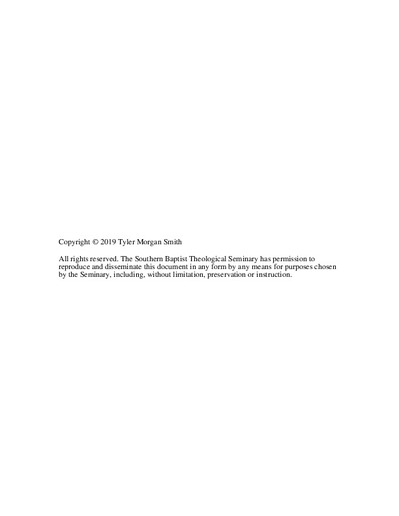| dc.description.abstract | This dissertation contends that the priesthood consists of people who, divinely granted access to the presence of God, are entrusted with serving God by guarding the holiness of his temple and his people through attending to the Word of God, border management, sacrifice, and mediation. Many scholars present an incomplete picture of the priesthood because they fail to understand its development in light of Scripture’s biblical-theological framework. This dissertation shows that the priesthood is understood more fully and accurately when it is analyzed according to the changing epochs of redemptive history, centered on the priesthood of Christ, and in relation to the special presence of God.
After chapter 1 introduces the theme and thesis of the dissertation, the chapters that follow analyze the priesthoods and the corresponding temples of Adam and Eve (chapter 2), the patriarchs (chapter 3), Israel (chapter 4), Jesus Christ (chapter 5), the new covenant people of God (chapter 6), and the eschatological people of God (chapter 7). Chapter 8 offers a summary of the dissertation, along with concluding thoughts.
From beginning to end, this dissertation traces the historical development of the priesthood, showing how each permutation of the office remains consistent with the above thesis. Though a measure of discontinuity and transformation occurs in the priesthood from one era to the next, much continuity characterizes the office throughout its development.
Each priesthood prior to Christ’s is flawed, and each finds its fulfillment in his. Jesus institutes the new covenant priesthood, charging the church to carry forward his cosmic mission to extend the borders of his holy sanctuary throughout the world until he returns and establishes the eschatological priesthood, which will serve God in the new creation. Until then, the church, as a divinely indwelt temple, attends to the priestly ministry of church discipline, with both its formative and corrective aspects. Church discipline, being rooted in the priestly identity, will continue as the mission of the new covenant priesthood until Christ returns and brings his priestly work to consummation. | en_US |

